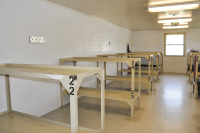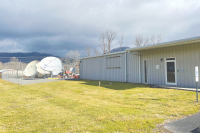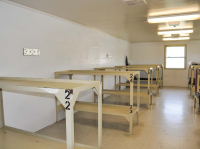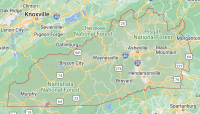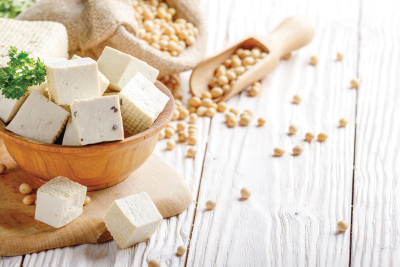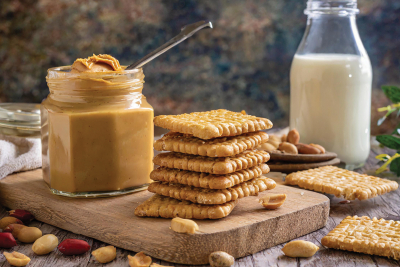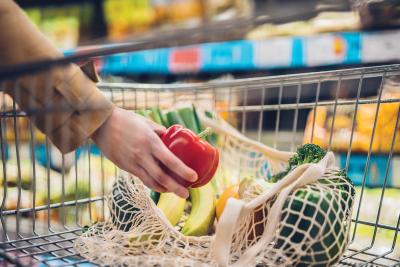Stories, salad and wildflowers: Plants a passion for Bigelow
 Adam Bigelow bears down on the gas pedal of his biodiesel-fueled Jetta, urging it up the steep contours of the Blue Ridge Parkway in search of higher ground. It’s a gardener’s car, through-and-through, the dash covered with dried plant parts, the floorboards papered with garden-related fliers and catalogues.
Adam Bigelow bears down on the gas pedal of his biodiesel-fueled Jetta, urging it up the steep contours of the Blue Ridge Parkway in search of higher ground. It’s a gardener’s car, through-and-through, the dash covered with dried plant parts, the floorboards papered with garden-related fliers and catalogues.
The only thing that’s missing is a live plant, and even that’s not too far-flung a reality. It wasn’t that long ago, Bigelow recalls, that he looked down from his seat to see a little pea plant growing up, apparently having received just the right amount of water from some mysterious source to take root in the car.
Filling the plate: Haywood group feeds the hungry with harvest leftovers
 A half-hour into the morning, Carol Larson has the gleaning operation smoothly underway at Skipper Russell’s farm in Bethel. A trio of tarps, topped with cardboard boxes neatly arranged in rows, sits on the grassy buffer between field and road. Beyond the tarps stretch rows — long, long rows — of cucumber plants.
A half-hour into the morning, Carol Larson has the gleaning operation smoothly underway at Skipper Russell’s farm in Bethel. A trio of tarps, topped with cardboard boxes neatly arranged in rows, sits on the grassy buffer between field and road. Beyond the tarps stretch rows — long, long rows — of cucumber plants.
Sowing the seed of learning: Elementary school garden serves as a conduit for science and life lessons alike
 Clad in his signature overalls, Joe Smiley leaned on his rake, taking in the tranquil late-summer scene: pie-pans strung among the corn stalks twisted in the breeze, daisies dipped ever so slightly under the weight of a welcome bee, a wheelbarrow gently rumbled its way down the garden path.
Clad in his signature overalls, Joe Smiley leaned on his rake, taking in the tranquil late-summer scene: pie-pans strung among the corn stalks twisted in the breeze, daisies dipped ever so slightly under the weight of a welcome bee, a wheelbarrow gently rumbled its way down the garden path.
Conference digs toward the root of hunger in WNC
 Sharing food can be a simple thing. Like passing a bag of trail mix to the hiking buddy who forgot to pack lunch, or ladling an extra bowl of chili for the neighbor who stopped by at dinnertime.
Sharing food can be a simple thing. Like passing a bag of trail mix to the hiking buddy who forgot to pack lunch, or ladling an extra bowl of chili for the neighbor who stopped by at dinnertime.
From a mustard seed: Churches get gardening to fight hometown hunger
 June Johnson’s foray into the world of gardening began in the dead of winter. A sunny January day last year inspired her to venture outside, and her walk brought her to the path behind Maggie Valley United Methodist Church and the grassy lawn surrounding it. The sight made her pause.
June Johnson’s foray into the world of gardening began in the dead of winter. A sunny January day last year inspired her to venture outside, and her walk brought her to the path behind Maggie Valley United Methodist Church and the grassy lawn surrounding it. The sight made her pause.
SEE ALSO: Conference digs toward the root of hunger in WNC
“Having grown up around farming, I thought, ‘Why don’t they have a church garden?’ and roamed into the back of the church,” recalled Johnson, a retired teacher and native of Haywood County.
Beyond blueberries: Backyard cornucopia revealed at native plants conference
 Taking a walk with Ila Hatter is the outdoors equivalent of sitting beside a scrapbooker as she pages through the family photo album. Every step is a story, a meeting with a plant bearing its own history and its own place in the present.
Taking a walk with Ila Hatter is the outdoors equivalent of sitting beside a scrapbooker as she pages through the family photo album. Every step is a story, a meeting with a plant bearing its own history and its own place in the present.
“I think stories help you remember,” Hatter said. “They give you something to hold onto as you’re learning plants.”
A favorite time to watch the home garden
This time of the year is perhaps the best time to enjoy flowering plants in a home garden. Many of the larger and showier species are just now coming into full bloom and will remain so into fall.
Several evenings ago, I came home tired and sat on the deck with a glass of iced tea, and the dogs and I just watched the plants. That was sort of therapeutic. Every once in a while, it seems the perfect thing to do. Just sit down and watch the plants.
Hearing all the buzz about sourwood
This is a special time of the year for beekeepers in Western North Carolina. It is the time they prepare for the sourwood honey flow.
Beekeepers in this area collect two types of honey from their charges: a spring wildflower mix made up of nectar sources such as locust, blackberry, poplar, apple trees and more, and then the summer’s sourwood.
Sourwood comes from the sourwood tree, or Oxydendrum arboreum. This tree, in my opinion, is underutilized in landscapes. During the summer it has a lovely white bloom, followed in the autumn by flaming brick red or scarlet leaves, making it a very choice ornamental indeed. Besides, what could be better than planting a native tree that helps feed our honeybees?
Explore unique, beautiful gardens
 By Shannan Mashburn • SMN Intern
By Shannan Mashburn • SMN Intern
Gardeners, wannabe-gardeners and those who simply appreciate a fine garden can catch a behind-the-scenes peak of some of the best gardens in Haywood County during the upcoming Haywood County Garden Tour from 9 a.m.-4 p.m. on Saturday, June 23.
The tour of six private gardens hosted by the Haywood County Master Gardener Volunteers will begin at the historic dairy barn at the Mountain Research Station at 265 Test Farm Road. The Research Station is located across Raccoon Road from the N.C. Cooperative Extension Center in Waynesville.
Planting is an inexact science, but here you go
Some time back I wrote that at a future date I’d print seed-starting dates for the remainder of the growing year. I’ve had a couple people ask about that, so I thought now would be as good a time as any to fulfill that promise.
I put together this calendar while farming for a living. Gardening is an inexact science, but I found that as a general rule these dates worked out more often than not. Having a list or calendar at least provides a reminder and guide to get things in that otherwise might be forgotten.
One important note: if you live at elevations higher than 3,000 to 4,000 feet then you might want to add two or so weeks to these suggested planting dates.
May
• Plant leek transplants.
• Direct seed okra.
• Direct seed basil, can plant later as well to have with tomatoes.
• Succession soybeans, beets, onion sets, radish, podding radish.
• Direct seed summer squash, cucumbers, cantaloupe, watermelon, pumpkin.
• Transplant tomatoes, eggplants and peppers as weather permits.
• Direct seed beans.
• Direct seed winter squash, spaghetti and butternut (don’t hurry, remember these are for storage).
• Under row cover, grow succession plantings of summer ‘lettuce’ mix: suggest, mizuna, kale, collards, tatsoi, red giant mustard, arugula. Use as cut-and-come again, harvest immature for raw salads. Replant short row every two weeks or so for summer use.
• Plant sweet potato slips.
• Plant chard, if haven’t already, also Malabar spinach, dill.
Early to mid June
• Start Brussels sprouts for fall transplants in shade or in shaded greenhouse.
• Succession soybeans, beets, onion sets, podding radish, summer lettuce mix.
• Plant more sweet corn, can keep planting up to July 4 and will make. Also, true for cucumbers, soybeans, summer squash.
End June to early July
• Sow in greenhouse or other shaded spot, broccoli and cabbage for fall planting.
Mid July
• Direct seed rutabaga and beets in garden.
• Start fall lettuces for transplants.
• Transplant Brussels sprouts when ready to garden.
Late July to early August
• Transplant broccoli and cabbage when ready to garden.
Early to mid August
• Direct seed kale, collards.
Mid August to Sept. 1
• Direct seed turnips for roots, turnips for tops, rape, mustards.
Late August
• Direct seed black Spanish radish, daikon, Chinese cabbage, scallions, mizuna, tatsoi, beet (for tops), chard, spinach, arugula.
• Seed more lettuce for transplants, start in cool place.
September
• Direct seed regular radishes, carrots, transplant first round lettuces to garden.
October
• Plant mache, claytonia, minutina. Replant tatsoi, mizuna, etc. for cut-and-come again. Transplant lettuces to garden under row cover.
November
• Plant garlic bulbs. Keep planting Asian greens as spaces open.
December - January
• Plant Asian greens. Carrots. Spinach. Let-tuce transplants.
Second week January
• First round cabbage, broccoli
Last week January
• Second round cabbage, broccoli (can continue planting in greenhouse through Febru-ary as needed).
• Peppers (can continue into February as needed, helps germination to start on a heating mat. Must be transplanted into continually bigger containers in greenhouse).
• Artichokes.
First week February
• Leeks.
• Head lettuces such as Buttercrunch, Tom Thumb.
• Chives, thyme, other herbs (continue planting through February, March as needed).
Second or third week February
• Parsley.
In garden toward end of February, first week March weather permitting. Be prepared to cover transplants when temps threaten to drop below 20 degrees.
• Transplant lettuce, broccoli and cabbage into garden.
• Direct seed leaf lettuce, snow peas, English peas, carrots, boc choi, onion sets, spinach, radishes, beets.
First week March
• Start tomatoes in greenhouse or house (must be transplanted into continually bigger containers).
• Start eggplant (in moist paper towels tucked into ventilated plastic sandwich bag in warm place in house, when germinated plant as usual in greenhouse or house).
Second week March
• Plant potatoes in garden (these are for new potatoes).
• Direct seed kohlrabi.
April
• Succession plant beets, onion sets (for green onions), radishes, podding radish.
• Direct seed cilantro, pole or bush beans, first planting of soybeans for edamame, sweet corn when soil warms (old-timers planted early corn when the dogwood blooms).
(Quintin Ellison can be reached at This email address is being protected from spambots. You need JavaScript enabled to view it..)

